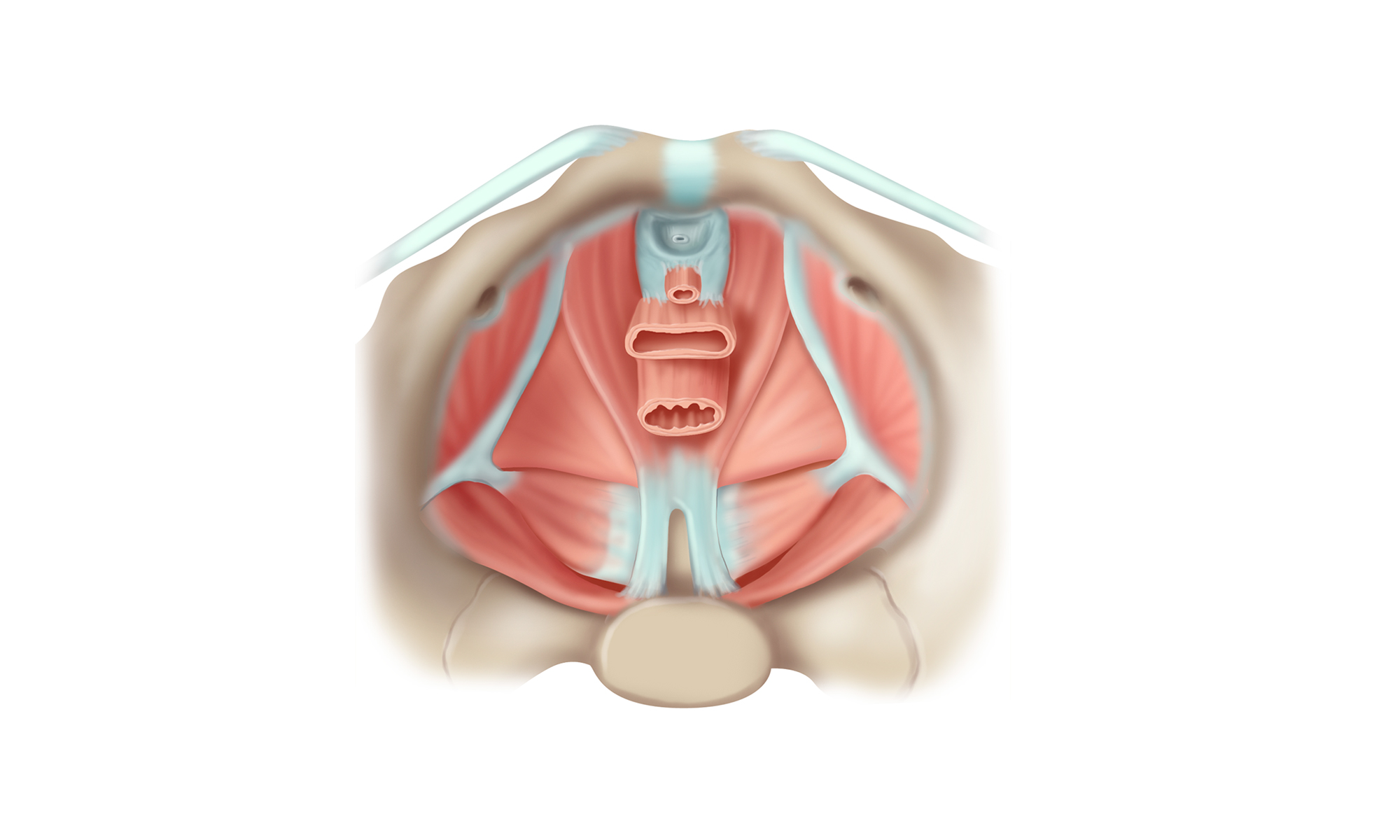Pelvic floor
A strong pelvic floor stabilises the internal organs of the abdominal cavity, makes the body feel stronger and improves posture. It is essentially the power centre of the body. Unfortunately, we tend only to become aware of it when its fundamental tightness declines and it is no longer able to do its job properly. With pelvic floor training at Kieser Training, you can specifically strengthen this group of muscles within the body.
Neglected and forgotten: the taboo subject of the pelvic floor.

Nur ungern sprechen Männer und Frauen über Probleme, die unterhalb der Gürtellinie liegen.
Coughing, sneezing, laughing – everyday life is full of situations that are out of our control. But if you have a weak pelvic floor, these can quickly become uncomfortable. For example, if you suffer from incontinence, you may lose a few drops of urine in such situations. For a long time, the pelvic floor muscles were a neglected or even taboo subject, but now we know how important this muscle group is inside our body. It contributes to good posture and stabilises our internal organs – if its strength diminishes, it can lead to significant problems for both women and men.
A weak pelvic floor has consequences.
The symptoms of a weak pelvic floor are varied. Men, for example, suffer from erectile dysfunction or have to deal with pelvic floor problems after prostate surgery. In women, a symptom can be a prolapsed uterus. Both sexes often suffer from abdominal pain, bladder prolapse and involuntary loss of urine and stool, i.e. incontinence, with women being significantly more affected than men. According to Dr Gabriela Kieser, almost one in three women over the age of 60 suffer from urinary incontinence. But young women can also be affected, especially after pregnancy and childbirth. And your sex life can also be influenced by the pelvic floor muscles. Having strong, healthy pelvic floor muscles can have a positive effect on your sexual sensitivity during intercourse.

Ein schwaches Becken kann auf die Blase schlagen.



